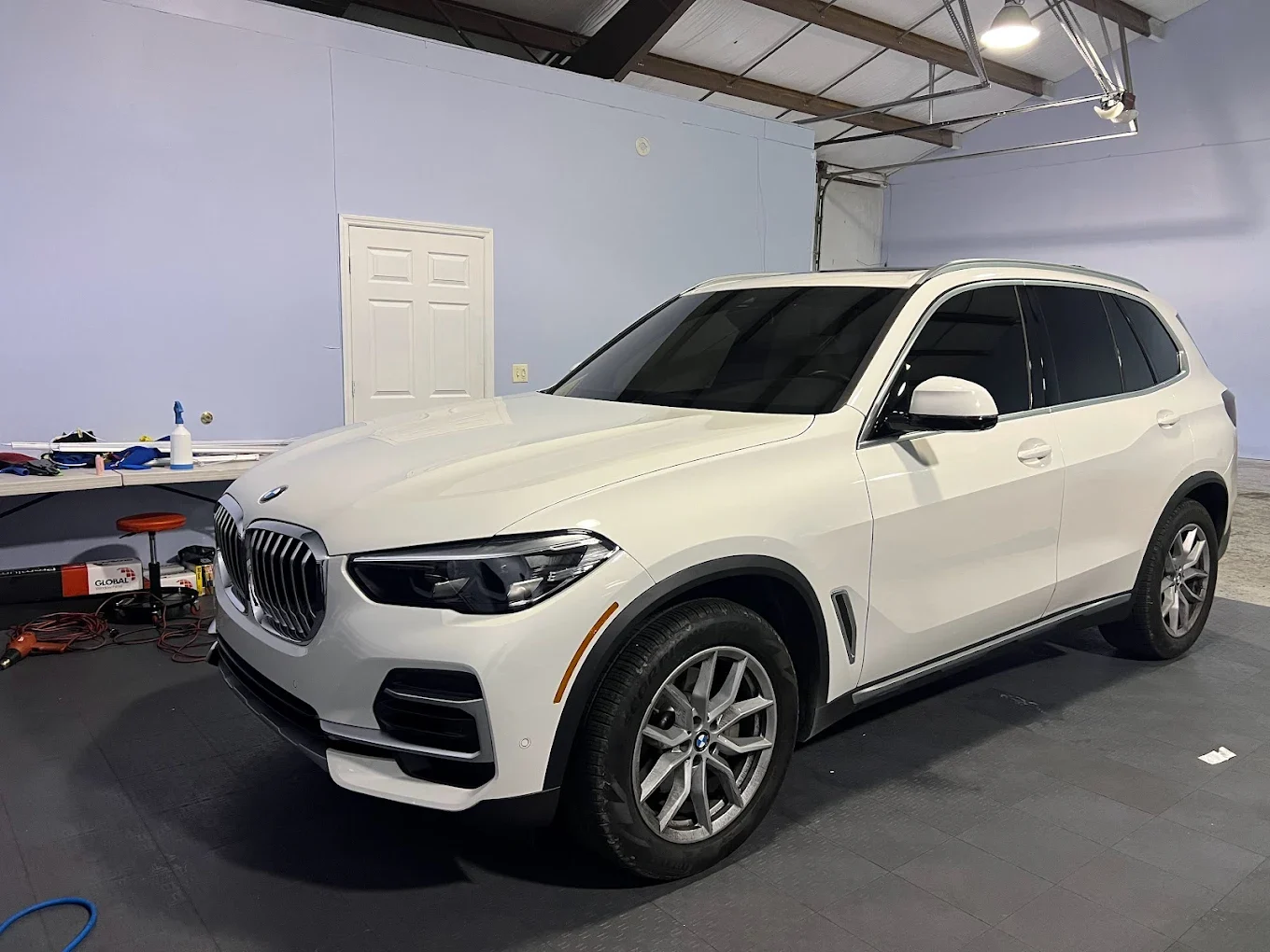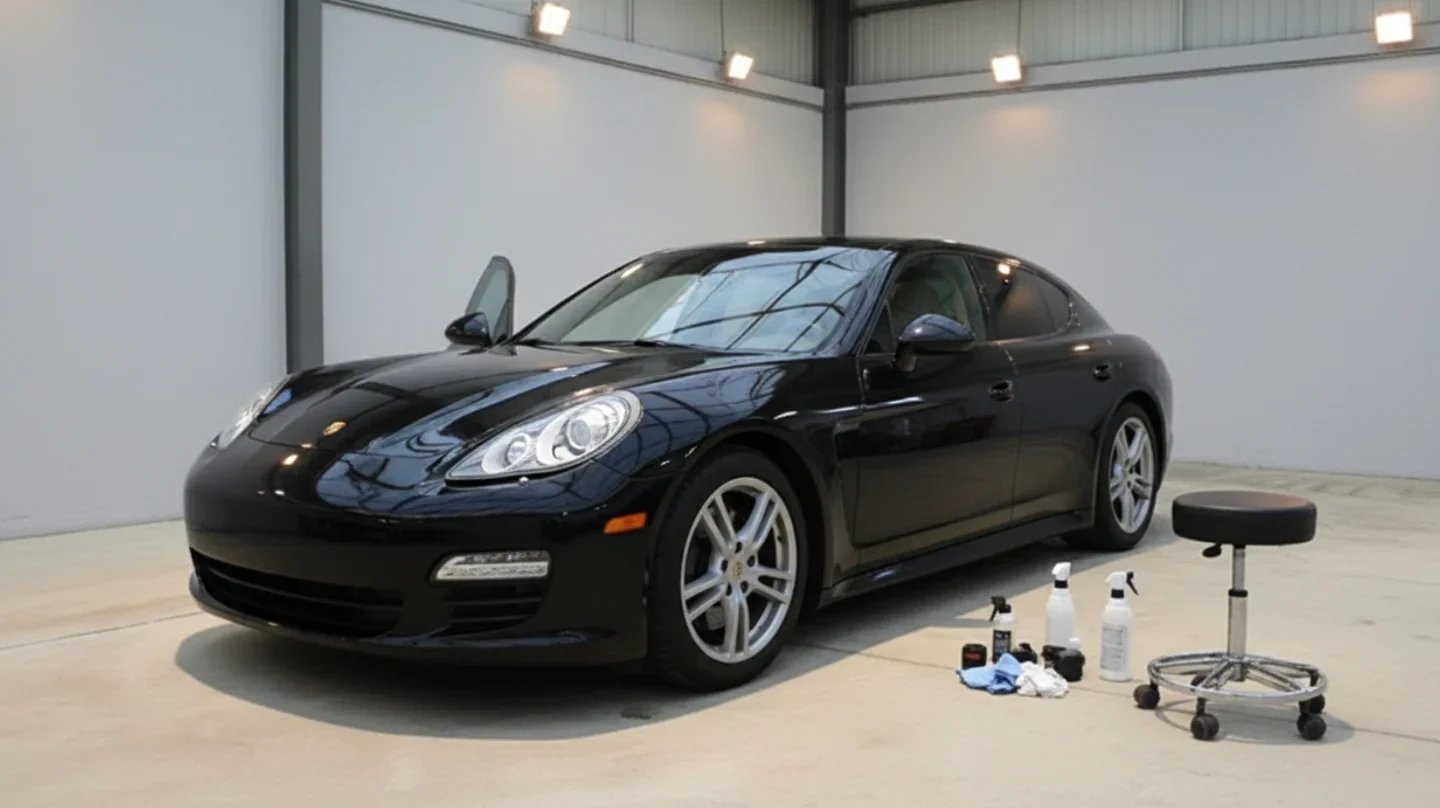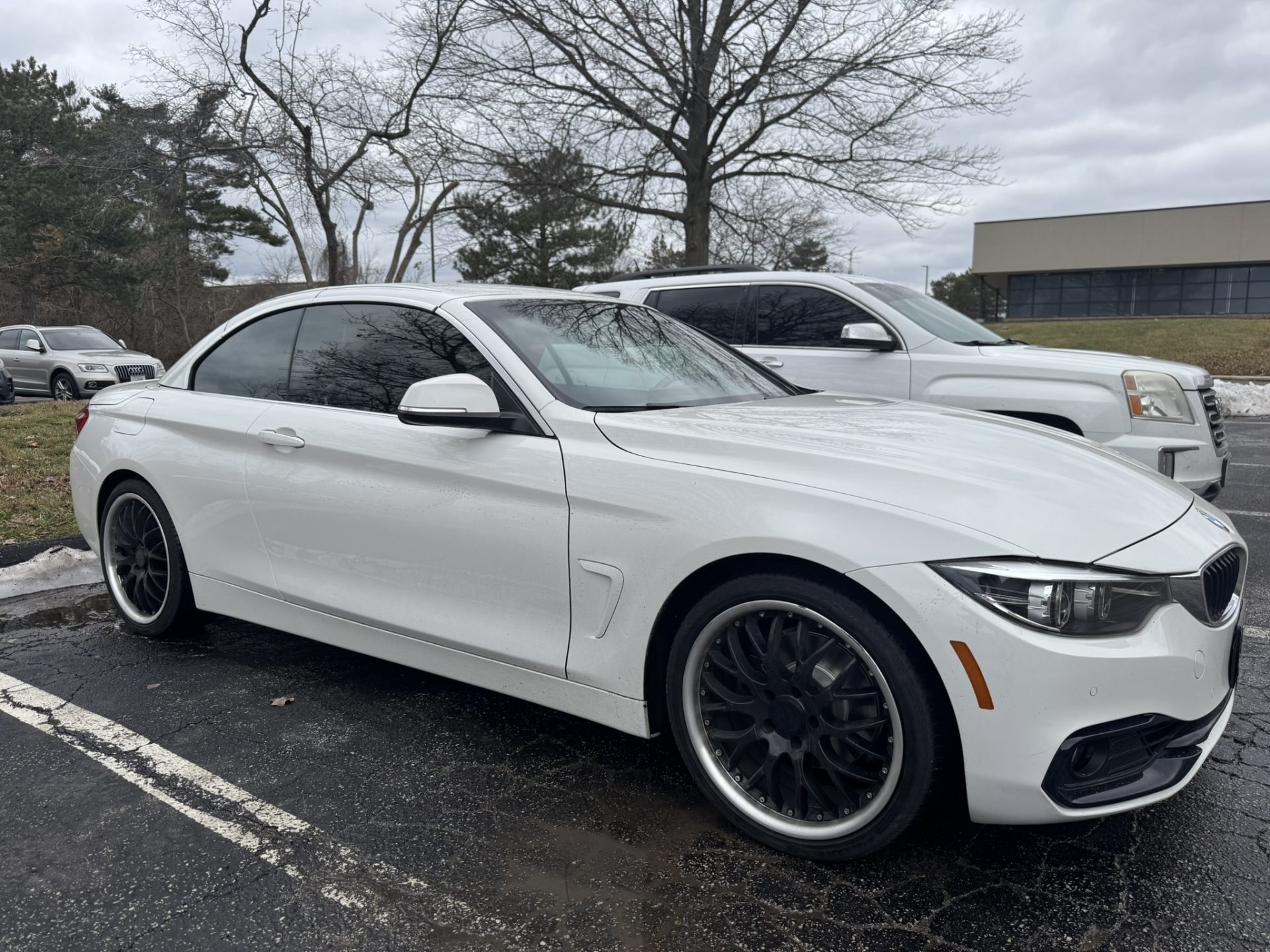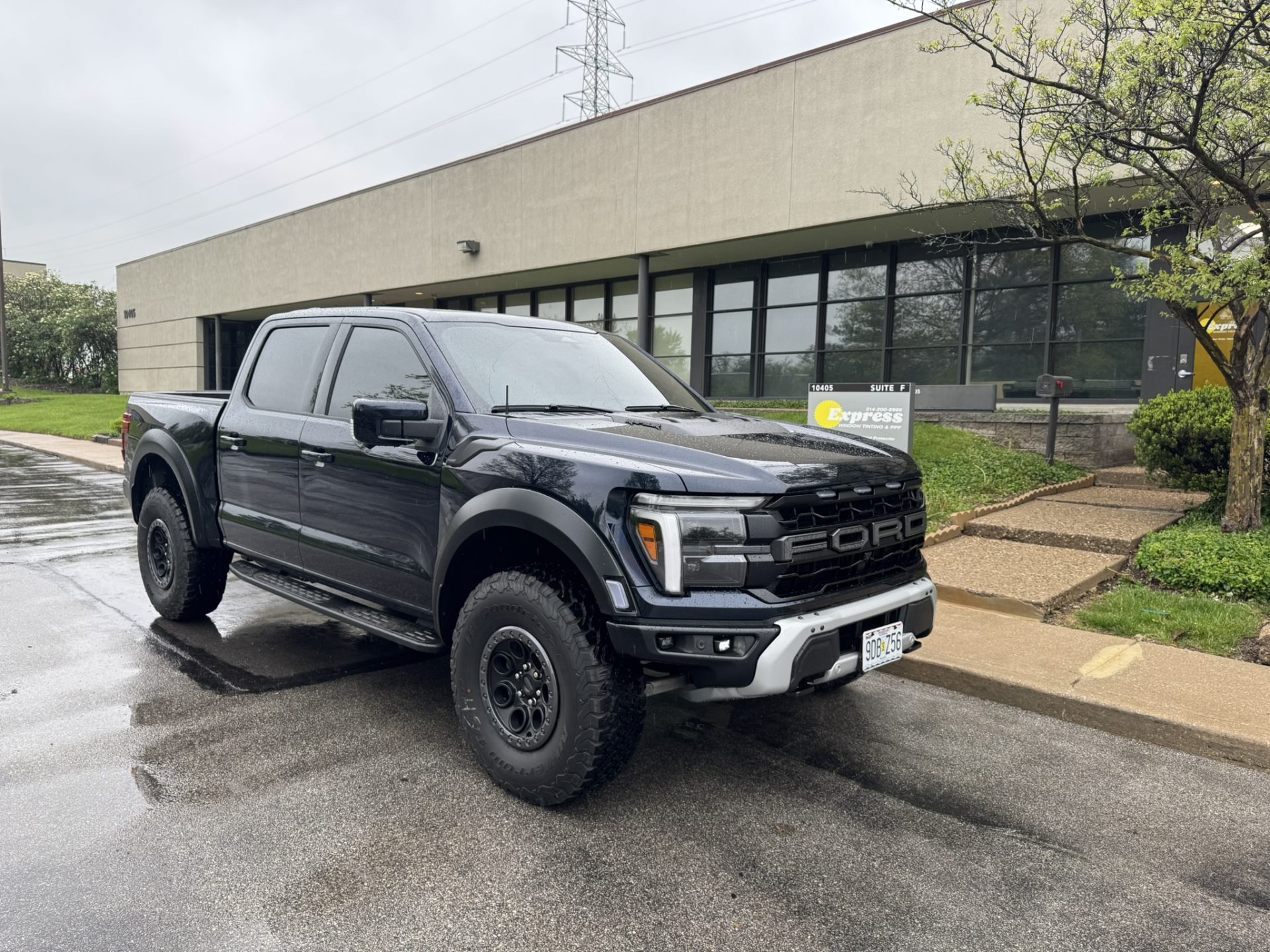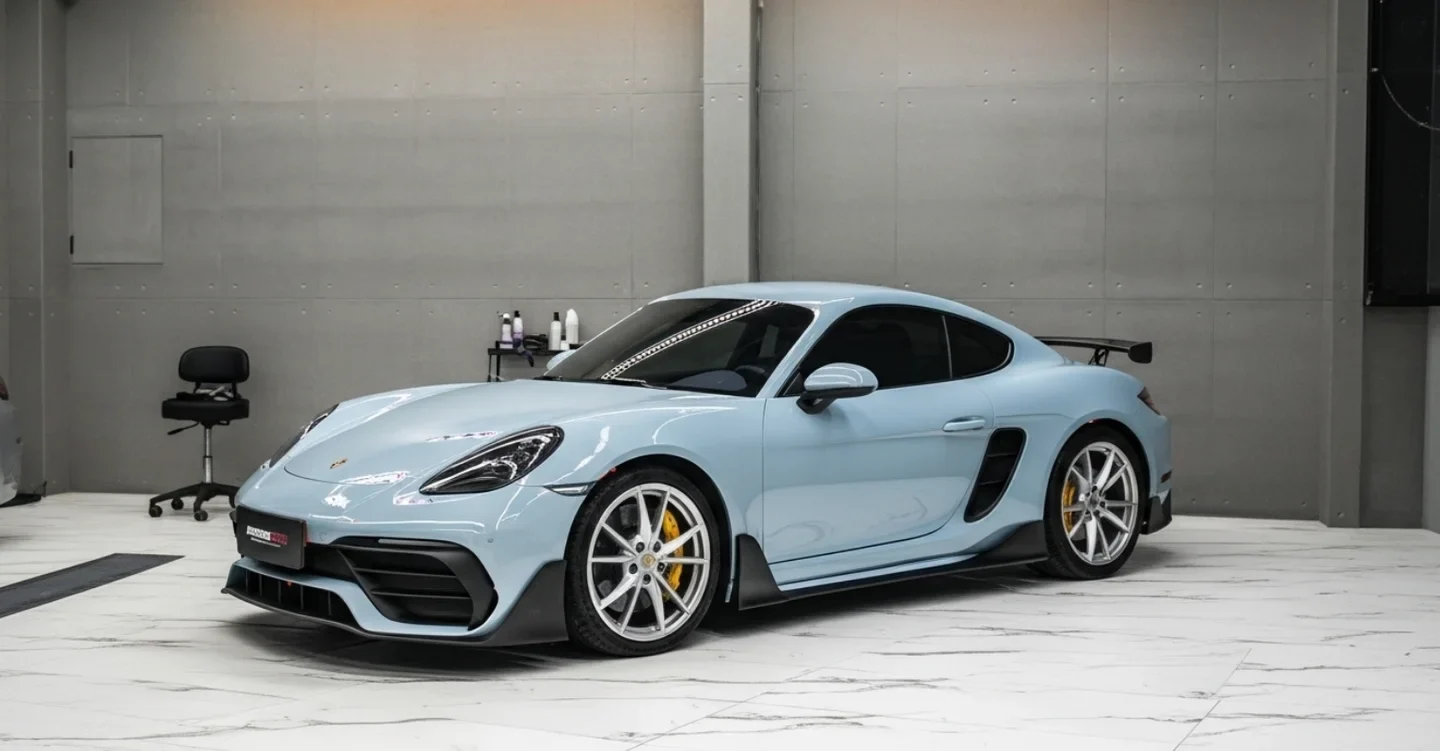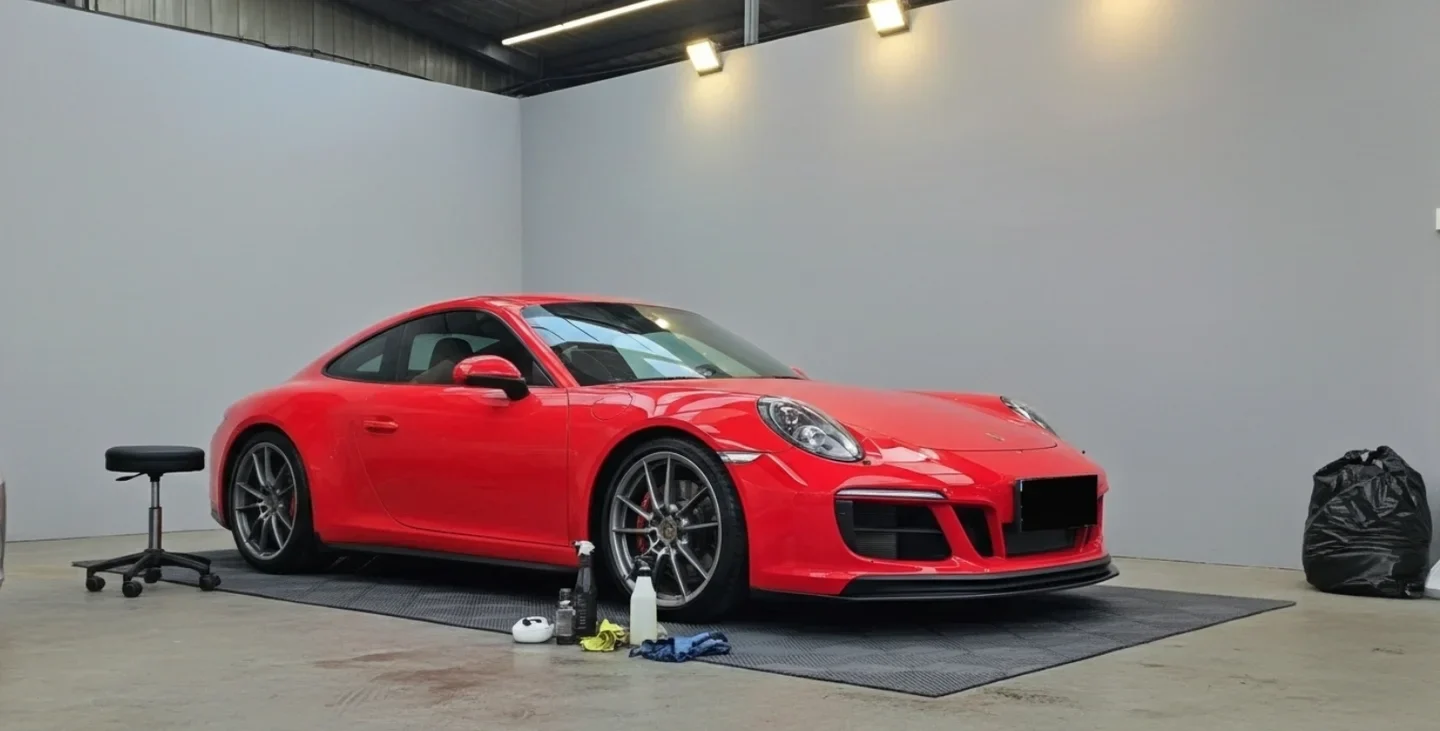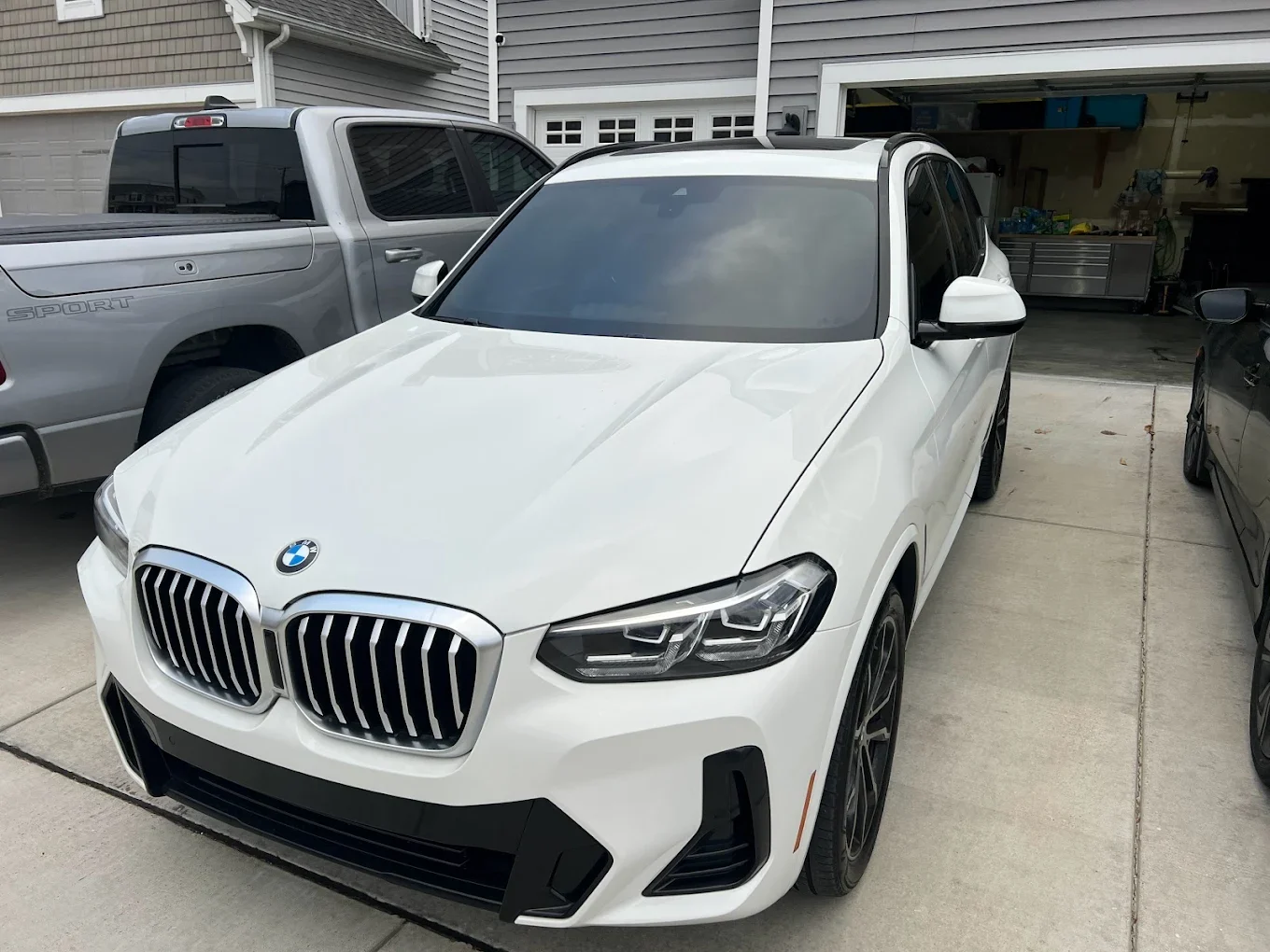Your car faces daily attacks: rock chips, bird droppings, UV rays, scratches—the list goes on. That’s exactly why Paint Protection Film (PPF) exists: it’s a transparent, high-performance barrier that keeps your ride looking impeccable. At Express Window Tinting & Paint Protection, we believe every driver deserves to understand PPF, its benefits, and how it works at a granular level.
In this comprehensive guide, you’ll discover the science behind PPF, the different film varieties, comparison to other protective options, installation details, maintenance advice, and whether it’s worth the investment.
What Is Paint Protection Film? Definition & Core Purpose
PPF as a Clear Urethane Shield
Paint Protection Film, often called clear bra, invisible shield, or PPF wrap, is a multi-layered, tear-resistant urethane film. Ranging from 6 to 8 mils thick, it’s strong enough to absorb chips and scuffs while remaining nearly invisible. The film preserves your original paint finish, providing long-term protection and improved vehicle aesthetics.
Why PPF Is Essential for Car Care
PPF combines several functions:
- UV Protection to reduce paint fading and discolouration
- Scratch resistance to buffer minor abrasions
- Self-healing abilities to smooth surface imperfections with mild heat
- Chemical defense against bird droppings, sap, and salt
Imagine your car coated in an invisible shield—the perfect armor without compromising appearance.
Understanding PPF Structure & Protection Mechanism
The Four Crucial Film Layers
- Protective Top Coat: Self-healing, hydrophobic surface
- Base Urethane Layer: Thick, durable core that absorbs impact
- Adhesive Layer: Strong but removable, adhering to paint
- Release Liner: Help sheet removed during installation
With this engineered layering, PPF blends impact resistance with easy maintenance.
How Self-Healing Works
Self-healing isn’t sci-fi—it’s chemistry. Minor scuffs activate the top elastomer layer to fill and level when exposed to warm environments. Drive home, park in sunlight, and watch scratches disappear. This feature dramatically extends the film’s lifespan.
Pros and Cons of Paint Protection Film (PPF)
Let’s be real—Paint Protection Film isn’t just for car enthusiasts anymore. Whether you drive a daily commuter or a high-end luxury vehicle, PPF can be a smart move. But like any investment, it comes with its highs and lows. Here’s a detailed breakdown to help you decide if it’s right for your ride.
Pros of Paint Protection Film: Why Car Owners Love It
1. Shields Your Paint from Daily Damage
PPF acts like a bodyguard for your car’s finish. It deflects road debris, prevents rock chips, and blocks minor scratches, keeping your paint looking like it just rolled out of the showroom. This is especially useful if you do a lot of highway driving or park in tight spots.
2. Self-Healing Technology
Many high-quality PPF products feature self-healing top layers, which means light scratches and swirl marks vanish with just a little heat. Whether from the sun or warm water, those blemishes fade without any polishing.
3. UV and Chemical Resistance
Say goodbye to fading paint and yellowing clear coats. PPF offers solid UV protection and shields your car against acid rain, bird droppings, bug splatter, and road salt. It’s like sunscreen and armor combined.
4. Keeps Your Car Looking New
Whether you choose a glossy or matte PPF finish, the film enhances your car’s aesthetic appeal. It provides a clean, uniform appearance and protects custom paint jobs or factory finishes for the long haul.
5. Preserves Resale Value
A flawless exterior means more money in your pocket when it’s time to sell or trade in. PPF helps maintain that “like-new” condition, making your car more attractive to future buyers.
Cons of Paint Protection Film: Things to Consider
1. Higher Upfront Cost
PPF isn’t cheap, especially if you go for full-body coverage or premium brands. It’s an investment, not just an accessory. However, it often pays off in the long run by reducing repair and repainting expenses.
2. Professional Installation Is a Must
Don’t try this one at home. PPF installation is a precision job that requires proper tools, clean space, and experience. DIY kits often lead to bubbles, wrinkles, or poor adhesion, which defeats the purpose of the film.
3. Regular Maintenance Still Required
While PPF cuts down on paint correction and detailing, it’s not maintenance-free. You’ll still need to wash your car properly using PPF-safe soaps, and avoid harsh chemicals or abrasive tools to preserve the film’s clarity and longevity.
What Paint Protection Film Helps Guard Against:
- Rock chips and flying debris
- Scratches and swirl marks
- UV damage and fading
- Bug acids and bird droppings
- Acid rain and chemical stains
- Road salt and grime
- Light dents and scuffs
Key Benefits of Paint Protection Film
Ultimate Shielding for Everyday Damage
PPF protects against gravel, road salt, bug acids, minor dings, and more. It saves you from the cost of frequent paint repairs and keeps your car showroom-fresh.
Preserves Your Car’s Value
Like a superhero cape for your paint, PPF ensures a mint condition finish. That pristine look boosts your car’s resale or trade-in value significantly.
Maintenance Made Easy
Hydrophobic and stain-resistant, PPF repels grime, is easy to clean, and pairs well with ceramic coating. No waxing needed—just mild soap and water.
UV Protection for Long-Term Shine
By filtering harmful UV rays, PPF prevents oxidation and yellowing. Unlike older films that discoloured over time, modern PPF retains clarity and gloss.
Different Types of PPF – Gloss, Matte, and Colored Options
Gloss Paint Protection Film
Mirrors your car’s clear coat—shiny, invisible, and seamless. Ideal for those wanting stealthy protection.
Matte PPF for Satin Finishes
Love the look of satin? Matte PPF delivers a smooth, non-reflective surface while safeguarding your paint—no buffing required.
Color-Shift & Customized PPF
Colored PPF offers both impact protection and a visual upgrade. These specialty films allow for unique looks without paint or wrap permanence.
PPF vs. Ceramic Coating vs. Vinyl Wrap – Which Should You Choose?
Comparing PPF to Ceramic Coating
- PPF: physical impact resistance
- Ceramic: chemical gloss & hydrophobic surface
Best together: PPF absorbs scratches, while ceramic adds shine.
Comparing PPF to Vinyl Wrap
- Vinyl: cosmetic wraps and color changes
- PPF: thicker, more durable protection Film
Wrap provides style; PPF provides substance.
Combining All Three
For ultimate protection and aesthetics—use PPF, ceramic, and vinyl strategically. Many clients at Express Window Tinting & Paint Protection opt for hybrid coverage.
Application Zones – Where Should You Install PPF?
Full Front-End Protection
Cover hood, fenders, mirrors, and bumper—great middle-ground for cost vs. coverage.
Partial Protection Packages
Protect corners, door edges, handles, trunk lips—critical problem regions that commonly chip.
Full-Vehicle Wrap
Complete coverage ensures every panel is guarded—excellent for high-mileage luxury cars.
Lighting Protection with PPF
Headlights and taillights benefit too—PPF prevents yellowing and cracking, offering clarity and longevity.
Professional Installation – Why It Matters
Clean, Climate-Controlled Bay
Dust-free settings and proper lighting ensure a gorgeous, bubble-free finish.
Precision-Cut Templates
Computer-generated templates match each vehicle shape exactly—no guesswork, just precision.
Fluids & Squeegee Application
The “wet install” process uses solutions for perfect alignment and smooth adhesion.
Curing Process
Once installed, the film needs time to bond—typically 24–48 hours before washing or pressure rinsing.
A pro’s skills prevent bubbling, peeling, and misapplication—saving you potential headaches later.
How to Maintain Your PPF Properly
Washing Guidelines
- Use a gentle, pH-neutral cleaner
- Gloves or microfiber mitts are your friends
- Avoid brute force pressure washing near edges
Safe Products
Choose PPF-compatible shampoos and ceramic waxes—don’t rely on harsh solvents.
Optional: Layer with Ceramic Coating
Boost hydrophobic performance and scratch resistance by ceramic coating over cured PPF.
Inspect for Wear or Damage
Look for yellowing, peeling, or non-healing scratches. These signs mean it’s time for film replacement.
Recognizing When to Replace Your PPF
Aging Indicators
Look out for discoloration, hazing, lifting edges, or persistent scratches that won’t self-heal.
Typical Lifespan
A high-quality PPF lasts 5–10 years, depending on exposure, upkeep, and film grade.
Partial vs. Full Replacement
Often only affected areas need changing. Express Window Tinting & Paint Protection can spot-treat or swap full panels depending on condition.
PPF Pricing – How Much Will It Cost?
Pricing varies by coverage area, film quality, and vehicle complexity:
| Coverage Type | Estimated Price Range |
| Partial (hood+mirrors) | $600–$1,200 |
| Full Front End | $1,200–$2,000 |
| Full Body Wrap | $4,000–$8,000+ |
| Ceramic Coating | $500–$2,500+ |
Financing & Packages
Flexible payment options and bundled deals (e.g., PPF + ceramic + tint) make it accessible.
Long-Term ROI
While initial cost may be high, the long-term savings from avoiding paint jobs and preserving resale value make it worthwhile.
Is Paint Protection Film Worth It? The Verdict
If you care about preserving your vehicle’s finish, drive often, or own a high-value car, PPF is a strong investment. It reduces paint repair costs, enhances longevity, and offers unmatched peace of mind.
For daily commuters, enthusiasts, and collector car owners alike, PPF is protection that pays for itself.
Why Choose Express Window Tinting & Paint Protection
- Certified installers trained in premium PPF brands
- Dust-free installation bays with meticulous attention
- Customized solutions for every vehicle and usage style
- Competitive pricing with full warranty coverage
- Dedicated aftercare support for maintenance and replacement
Final Thoughts – Protect Your Investment Today!
Paint Protection Film is the ultimate armor your paint never knew it needed. With unmatched scratch defense, UV resilience, self-healing magic, and style versatility, PPF shields your car and keeps it looking fresh mile after mile.
If you’re ready to preserve, protect, and polish your ride, get in touch with Express Window Tinting & Paint Protection for a detailed quote and expert installation. Let’s safeguard your car’s beauty and value for years to come.
FAQs About Paint Protection Film
1. Can PPF be applied over ceramic coating?
Yes, but only if the ceramic coating is fully cured. PPF goes under the coating to act as the main protective layer.
2. Will PPF cause paint damage when removed?
Not when done properly. High-quality PPF is designed for clean removal without residue or paint damage.
3. How often should I inspect my PPF?
Every 6–12 months. Look for yellowing, lifting edges, or damaged areas—treat early to avoid paint exposure.
4. Can I wax or polish over PPF?
Yes—use non-abrasive, PPF-safe waxes or ceramic sealants. Avoid heavy polishes that could wear down the top coat.
5. Does PPF change my vehicle’s color or gloss?
Not unless you choose matte or colored PPF. Gloss film is virtually invisible, while matte offers a satin-style finish without paint changes.


